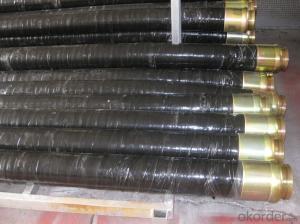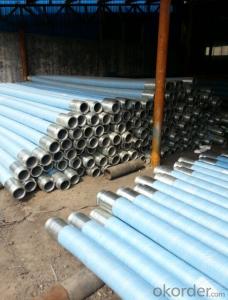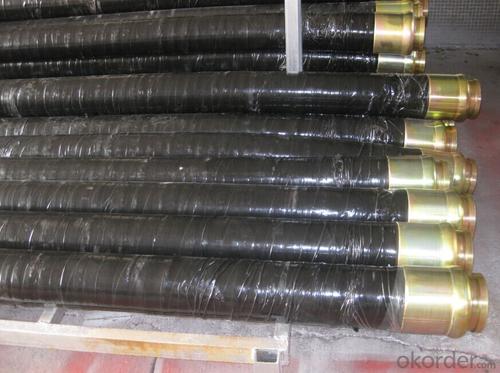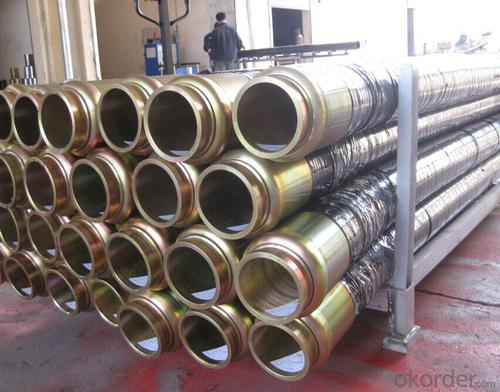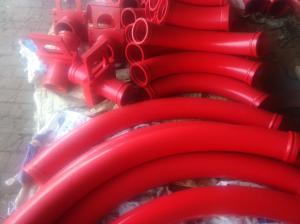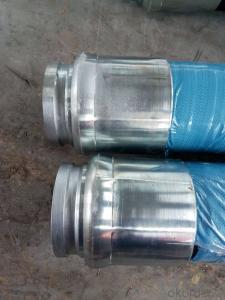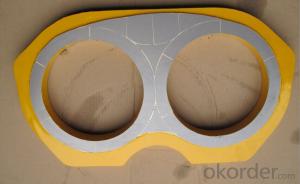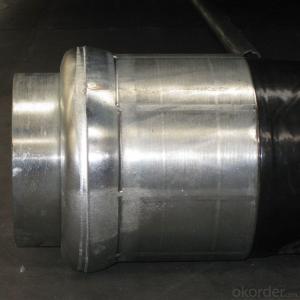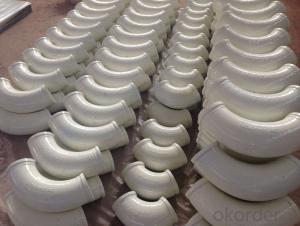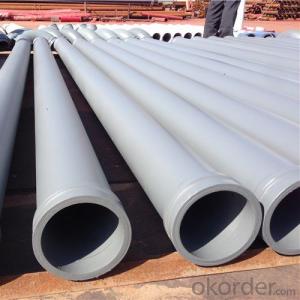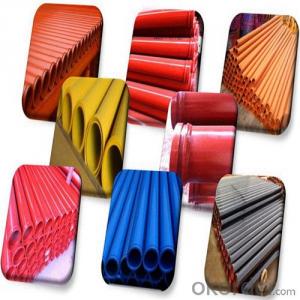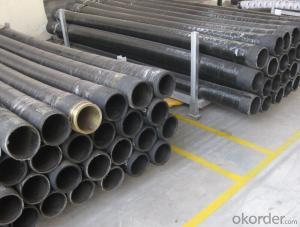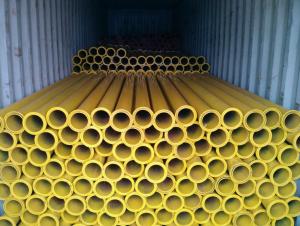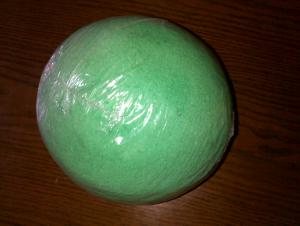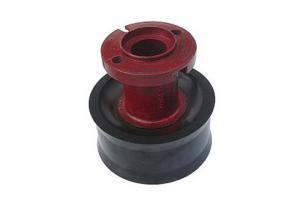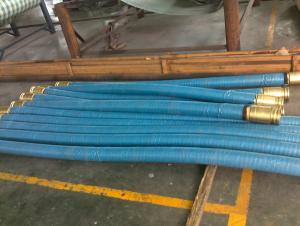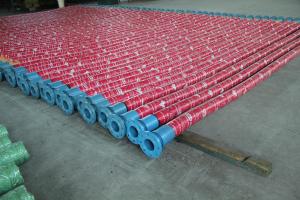6M*DN80 RUBBER END HOSE WITH ONE SIDE COUPLINGS WORKING PRESSURE 85 BAR
- Loading Port:
- Shanghai
- Payment Terms:
- TT OR LC
- Min Order Qty:
- 10 pc
- Supply Capability:
- 5000 pc/month
OKorder Service Pledge
OKorder Financial Service
You Might Also Like
Specifications
Putzmeister concrete pump end rubber hose
1. Size: DN150, DN125, DN100, DN80...
2. Length: 1~9m
Concrete pump end rubber hose PM &Schwing
Name | Specifications | Application | Flange diameter | Remarks |
Rubber hose | DN125*3000 | Concrete pump | 148/DN157mm | |
Rubber hose | DN150*3000 | Concrete pump | 148/DN157mm | |
High pressure | DN125*3000 | Concrete pump | 148/DN157mm | Two layers of steel wire |
High pressure | DN125*3000 | Concrete pump | 148/DN157mm | Four layers of steel wire |
High pressure | DN125*4000 | Concrete pump | 148/DN157mm | |
High pressure | DN150*3000 | Concrete pump | 175mm | |
| DN80*5000 | Mortar pump mini conctete pump | 98mm | |
| DN80*6000 | Mortar pump mini conctete pump | 98mm | |
| DN100*5000 | Mortar pump mini conctete pump | 124mm | |
| DN76*6000 | Fine stone concrete pump mini conctete pump |
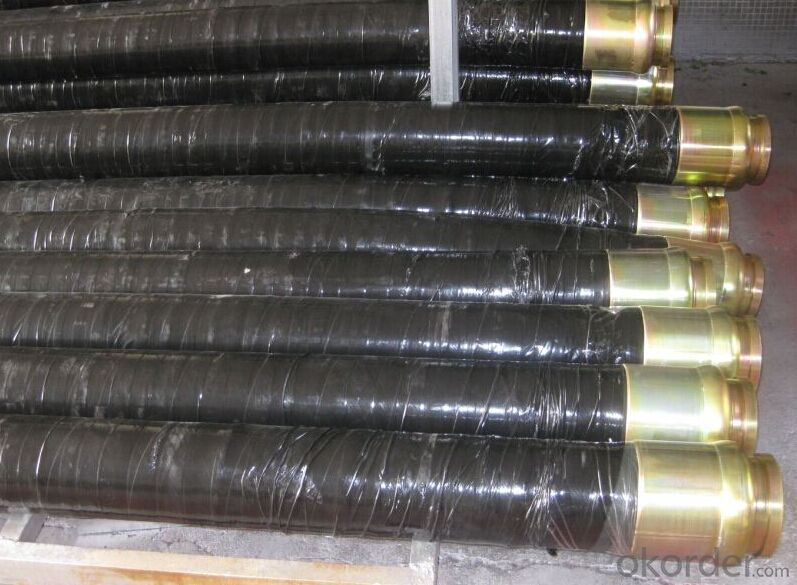
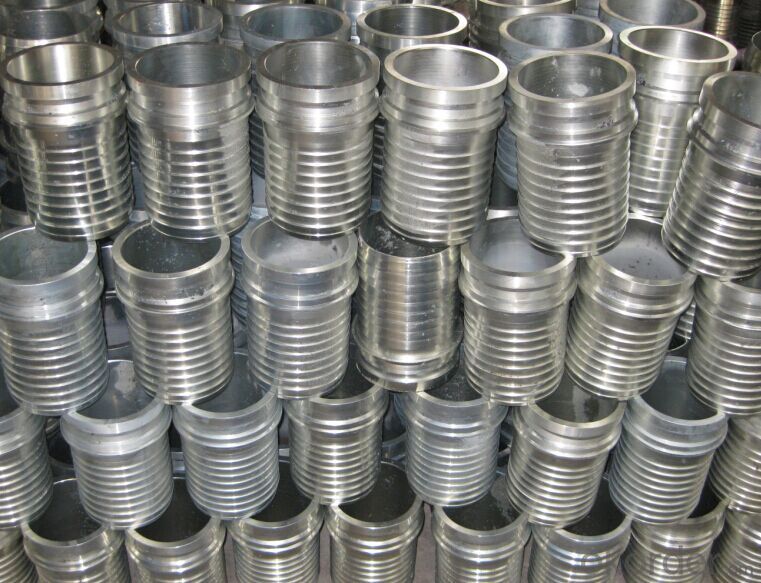
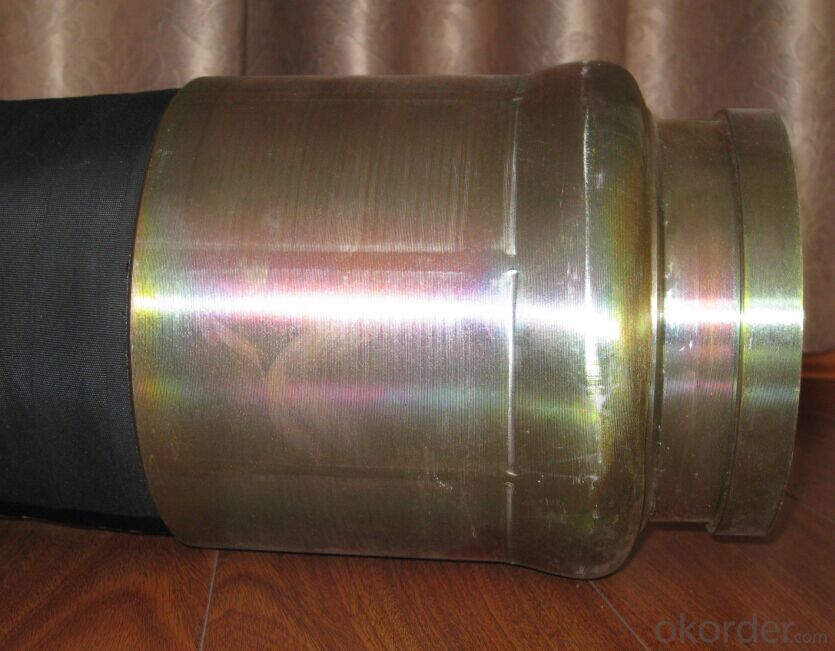
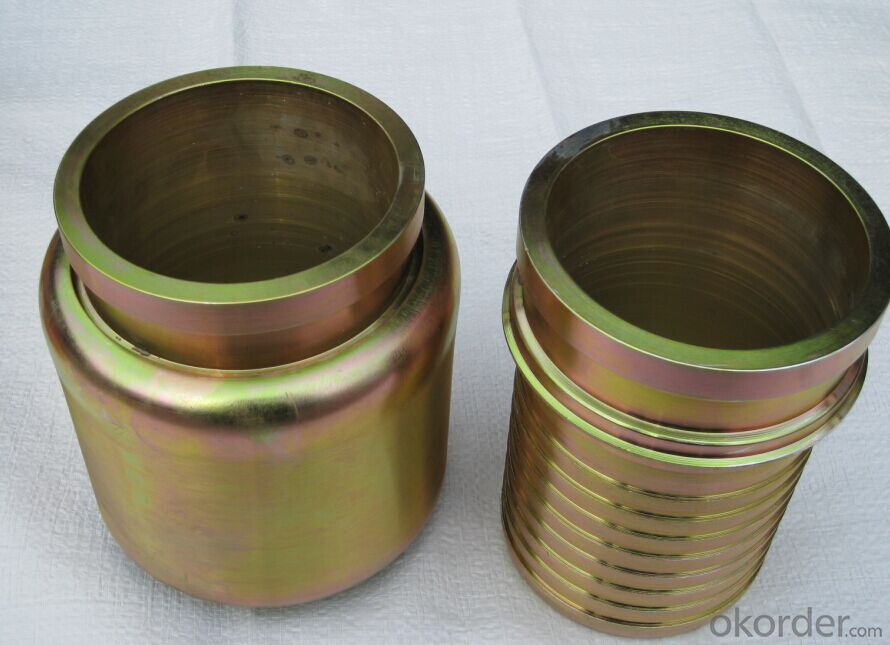
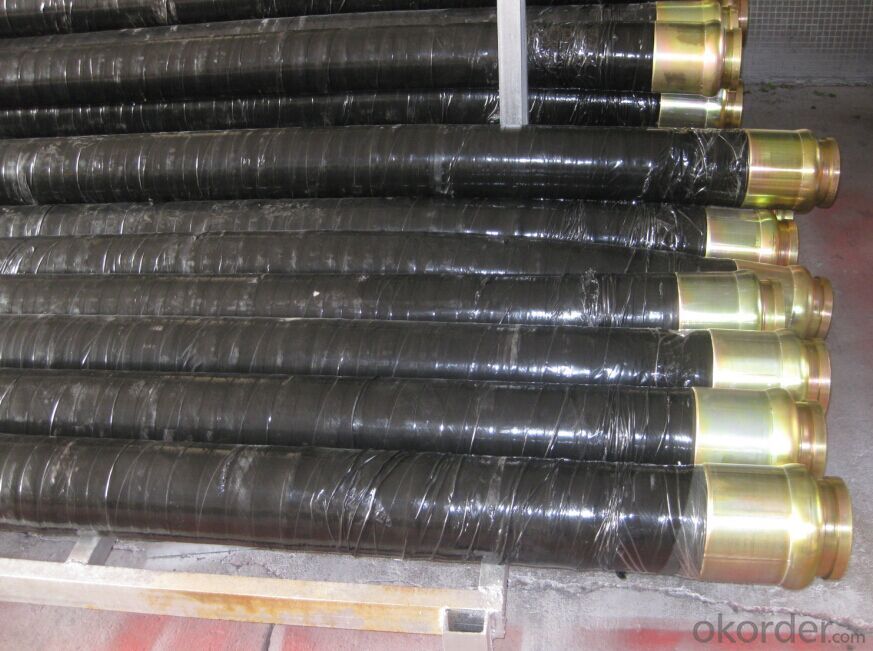
- Q: Are there any specific training or certifications required for handling and installing concrete pump spare parts?
- Yes, there are specific training and certifications required for handling and installing concrete pump spare parts. Due to the specialized nature of the equipment and the potential risks involved, individuals who handle and install concrete pump spare parts should undergo proper training and obtain relevant certifications. Firstly, it is essential to have a thorough understanding of the functioning and components of concrete pumps. This knowledge can be acquired through comprehensive training programs offered by equipment manufacturers, industry associations, and vocational schools. These training programs cover topics such as pump operation, maintenance, troubleshooting, and safety protocols. Additionally, specific certifications may be required depending on the jurisdiction or industry standards. For example, the American Concrete Pumping Association (ACPA) offers a certification program known as the ACPA Operator Certification. This certification requires individuals to demonstrate their knowledge and skills related to concrete pumping equipment, including the handling and installation of spare parts. Obtaining these certifications ensures that individuals are equipped with the necessary knowledge and skills to handle and install concrete pump spare parts safely and efficiently. It also helps in maintaining compliance with industry regulations and standards. It is important to note that the specific training and certification requirements may vary depending on the region, industry, and the type of concrete pump being used. Therefore, it is recommended to consult local regulations and industry guidelines to ensure compliance with the necessary training and certification requirements for handling and installing concrete pump spare parts.
- Q: How do I properly maintain and replace filters in concrete pump spare parts?
- Properly maintaining and replacing filters in concrete pump spare parts is essential for ensuring optimal performance and longevity of your equipment. Here are some steps to follow: 1. Understand the different types of filters: Concrete pumps typically have different filters for various components, such as hydraulic oil, fuel, air, and water. Familiarize yourself with the specific filters used in your equipment. 2. Refer to the manufacturer's guidelines: Read the equipment manual and follow the guidelines provided by the manufacturer regarding filter maintenance and replacement intervals. This will help ensure that you are following the recommended practices. 3. Regularly inspect filters: Periodically inspect the filters to identify any signs of damage, clogging, or excessive debris accumulation. This can be done visually or by checking the pressure differential across the filter. If the pressure differential exceeds the recommended limit, it may indicate a need for filter replacement. 4. Clean or replace filters as needed: If the filters are clogged or dirty, they need to be cleaned or replaced. Some filters can be cleaned by blowing compressed air in the opposite direction of the airflow to remove debris. However, it is important to note that some filters are disposable and cannot be cleaned. 5. Use genuine spare parts: When replacing filters, always use genuine spare parts recommended by the manufacturer. This ensures compatibility and performance. 6. Follow proper handling and installation procedures: When installing new filters, make sure to handle them with clean hands or gloves to prevent contamination. Follow the correct installation procedure, such as tightening the filter housing to the recommended torque value. 7. Keep a maintenance schedule: Establish a regular maintenance schedule for filter inspection, cleaning, and replacement. This will help you stay on top of filter maintenance and prevent any potential issues caused by dirty or clogged filters. By following these steps, you can properly maintain and replace filters in concrete pump spare parts, ensuring that your equipment operates efficiently and has an extended lifespan.
- Q: How does a concrete pump piston work?
- A concrete pump piston works by creating a reciprocating motion that pushes the concrete through the pump and into the desired location. The piston is a cylindrical component that fits snugly inside a cylinder. It is connected to a rod, which is attached to a hydraulic system. When the hydraulic system is activated, it pushes the rod forward, causing the piston to move in the same direction. As the piston moves forward, it creates a vacuum behind it, drawing the concrete into the cylinder through an inlet valve. Once the piston reaches the end of its forward stroke, the hydraulic system reverses its direction, pulling the rod back and causing the piston to move backward. This closes the inlet valve and opens an outlet valve, allowing the concrete to be forced out of the cylinder and into the delivery line. The reciprocating motion of the piston, along with the alternating opening and closing of the inlet and outlet valves, allows for a continuous flow of concrete through the pump. This process is repeated rapidly, allowing for efficient and consistent pumping of concrete to the desired location.
- Q: How do I ensure the compatibility of mechanical components in concrete pump spare parts?
- To ensure the compatibility of mechanical components in concrete pump spare parts, it is crucial to consider several factors. First, it is important to identify the specific make and model of the concrete pump and its components. This information will help in sourcing the correct spare parts that are designed to fit and function properly with the existing system. Additionally, it is recommended to consult the manufacturer's documentation or reach out to their customer support for guidance. They can provide detailed specifications and compatibility guidelines for the mechanical components. It is essential to match the dimensions, tolerances, and materials of the spare parts to the original components to ensure a proper fit and optimal performance. Furthermore, working with reputable suppliers or distributors who specialize in concrete pump spare parts can greatly enhance compatibility assurance. These professionals have extensive knowledge and experience in the industry and can guide you in selecting the right components that are compatible with your specific concrete pump model. Regular maintenance and inspection of the mechanical components are also essential to identify any wear or damage. By addressing any issues promptly and replacing worn-out parts with compatible ones, you can ensure the overall compatibility and longevity of the mechanical components in your concrete pump spare parts.
- Q: How do I troubleshoot issues related to concrete pump spare parts control systems?
- To troubleshoot issues related to concrete pump spare parts control systems, it is important to follow a systematic approach. Here are some steps you can take: 1. Identify the problem: Begin by clearly identifying the issue you are experiencing with the control system. Is it not working at all? Are there specific functions or components that are not functioning correctly? Understanding the problem will help guide your troubleshooting efforts. 2. Check power supply: Ensure that the control system is receiving proper power supply. Check the power source, circuit breakers, and fuses to ensure there are no interruptions or faults in the electrical supply. If needed, replace or repair any faulty components. 3. Inspect connections: Examine the wiring connections and terminals within the control system. Loose or damaged connections can cause issues with the functioning of the system. Tighten any loose connections and repair or replace any damaged wiring. 4. Review control settings: Verify that the control settings are correctly adjusted according to the manufacturer's specifications. Incorrect settings can lead to malfunctions or inefficient operation. Consult the user manual or contact the manufacturer for guidance on proper control settings. 5. Perform diagnostic tests: Many control systems have built-in diagnostic features or error codes that can help identify specific issues. Consult the system's manual to understand how to access and interpret these diagnostic tools. Run any recommended diagnostic tests to pinpoint the problem area. 6. Inspect sensors and actuators: Sensors and actuators play a crucial role in the control system's operation. Check these components for any damage, misalignment, or malfunctioning. Clean or replace sensors as needed and ensure the actuators are properly connected and functioning correctly. 7. Consult technical support: If you have followed the above steps and are still unable to resolve the issue, it may be helpful to contact the manufacturer's technical support team. They can provide expert guidance on troubleshooting the specific control system and may suggest additional steps or solutions. Remember to always prioritize safety when troubleshooting control systems. Ensure that the pump is turned off and disconnected from the power source before working on any electrical components. If you are unsure or uncomfortable with any troubleshooting steps, it is best to seek professional assistance.
- Q: How can one determine the correct voltage and current rating for electrical components in concrete pump spare parts?
- To determine the correct voltage and current rating for electrical components in concrete pump spare parts, several factors need to be considered. Firstly, it is essential to consult the manufacturer's specifications and documentation for the concrete pump and its spare parts. These documents usually provide detailed information about the voltage and current requirements for each electrical component. Paying close attention to these guidelines ensures that the components are operated within their designed parameters. Secondly, it is crucial to understand the electrical system and its requirements. This involves analyzing the power supply available at the site where the concrete pump will be used. Factors such as the voltage level (e.g., 110V, 220V, 440V) and frequency (e.g., 50Hz, 60Hz) of the electrical supply need to be taken into account. Additionally, the maximum current capacity of the electrical system must be considered to prevent overload situations. Furthermore, it is advisable to assess the specific application and operating conditions of the concrete pump. Different components may have varying voltage and current requirements depending on their function and the environment in which they are used. For instance, components installed in outdoor areas may require higher voltage ratings to withstand harsh weather conditions. Lastly, seeking professional assistance from qualified electricians or engineers is highly recommended. They possess the expertise and knowledge to accurately determine the voltage and current ratings for electrical components in concrete pump spare parts. Their experience allows them to consider various factors such as safety regulations, compatibility with the existing electrical system, and any specific requirements of the concrete pump manufacturer. By taking into account the manufacturer's specifications, understanding the electrical system, considering the application and operating conditions, and seeking professional advice, one can effectively determine the correct voltage and current rating for electrical components in concrete pump spare parts.
- Q: What are the safety measures to consider while replacing concrete pump spare parts?
- To ensure the safety of workers and the successful replacement process of concrete pump spare parts, it is important to consider several safety measures. Firstly, before beginning any maintenance or replacement work, it is crucial to adhere to proper lockout/tagout procedures. This involves disconnecting the equipment from its power source and using lockout devices to prevent accidental startup. This ensures that the equipment cannot be operated while replacement work is being carried out. Secondly, workers involved in the replacement process should wear the appropriate personal protective equipment (PPE). This includes safety goggles, gloves, hard hats, and steel-toed boots to protect against potential hazards such as flying debris, falling objects, or accidental contact with sharp edges. Additionally, prior to starting the replacement, a thorough inspection of the equipment should be conducted to identify any potential hazards or defects. This includes checking for damaged or worn-out parts, loose connections, or any signs of deterioration. If any issues are found, they should be resolved or repaired before proceeding with the replacement. Furthermore, proper lifting techniques must be utilized to prevent musculoskeletal injuries. Concrete pump spare parts can be heavy and bulky, so workers should be trained on lifting techniques and should use mechanical aids like cranes, hoists, or forklifts when necessary. When dealing with heavy or awkwardly shaped parts, team lifting should be employed. Moreover, the work area should be secured to prevent unauthorized access and ensure the safety of workers. This can be done by using barricades or caution tape to cordon off the area and provide warnings to others about the ongoing replacement work. Adequate lighting should also be provided for clear visibility. Using the right tools and equipment is crucial for safe and efficient replacement work. Workers should be trained on the proper use of tools and ensure that they are in good working condition. Using damaged or faulty tools can lead to accidents or improper installation of the spare parts. Lastly, it is important to follow the manufacturer's instructions and guidelines for replacing concrete pump spare parts. This includes understanding the correct sequence of steps, torque requirements, and any special precautions that need to be taken. Deviating from the manufacturer's instructions can compromise the safety and performance of the equipment. By implementing these safety measures, the risk of accidents, injuries, or equipment damage can be minimized during the replacement of concrete pump spare parts. Safety should always be prioritized, and all workers involved should be properly trained and equipped to carry out the replacement work.
- Q: What is the importance of a concrete pump control valve?
- A concrete pump control valve is important because it allows for precise control and regulation of the flow rate and pressure of concrete being pumped. This ensures that the concrete is delivered accurately and efficiently to the desired location, preventing wastage and improving overall productivity of the construction process. Additionally, the control valve prevents blockages and potential damage to the pump by allowing operators to adjust the flow as needed, maintaining a smooth and continuous operation.
- Q: Can I get spare parts for concrete pump accessories like remote control systems?
- Certainly, spare parts for concrete pump accessories like remote control systems can be obtained. A variety of spare parts for these products are offered by numerous manufacturers and suppliers of concrete pump accessories. These spare parts encompass various components for remote control systems, including buttons, switches, sensors, batteries, and transmitters. To ensure the availability of spare parts for your particular model of remote control system, it is advisable to directly contact the manufacturer or supplier. They will be equipped to furnish you with the essential information and aid you in procuring the necessary spare parts.
- Q: How can a faulty lubrication system affect the pump's performance?
- A faulty lubrication system can negatively impact the pump's performance in several ways. Firstly, inadequate lubrication can increase friction and wear on the moving parts of the pump, leading to premature failure and reduced efficiency. Secondly, without proper lubrication, excessive heat can build up, causing parts to expand and potentially seize. This can further impair the pump's ability to move fluid effectively. Lastly, a faulty lubrication system may also introduce contaminants into the pump, which can damage components and disrupt the smooth operation of the pump. Overall, a malfunctioning lubrication system can significantly impair the performance and lifespan of the pump.
Send your message to us
6M*DN80 RUBBER END HOSE WITH ONE SIDE COUPLINGS WORKING PRESSURE 85 BAR
- Loading Port:
- Shanghai
- Payment Terms:
- TT OR LC
- Min Order Qty:
- 10 pc
- Supply Capability:
- 5000 pc/month
OKorder Service Pledge
OKorder Financial Service
Similar products
Hot products
Hot Searches
Related keywords
